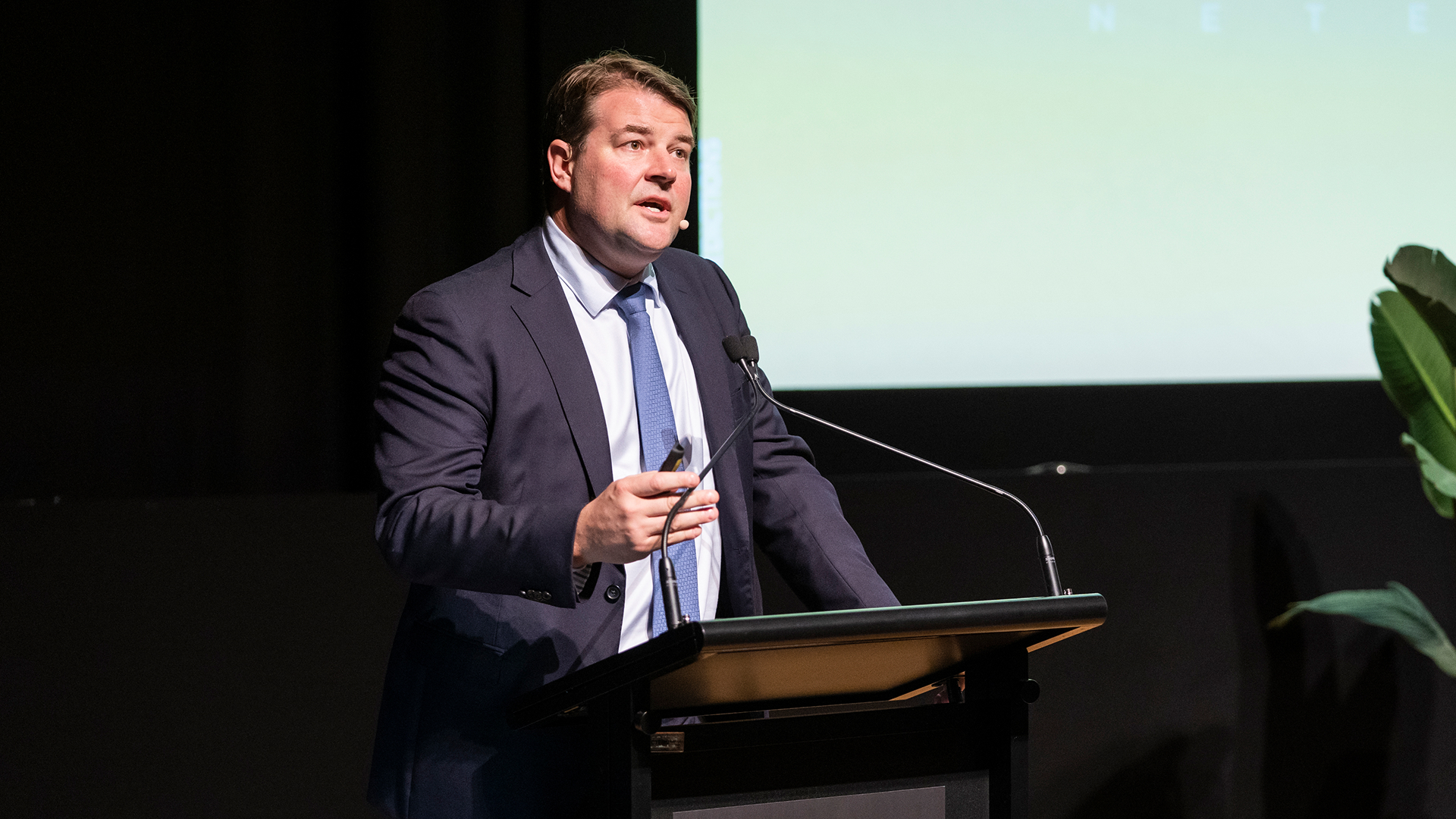Why are the bears getting so worked up?

Very few investors seem at ease with the strength in equities - or the broader rally across risk assets. Headlines remain downbeat. Bubble warnings are loud, valuation sceptics are plentiful, and markets continue to track President Trump’s posts as if they were policy statements.
I’m generally comfortable ignoring market noise, but when the narrative starts to feel one-way, I check in with the US bond market. It’s rarely emotional and often a useful counterpoint to the headlines. Earlier this year, US 10-year yields reached 4.8% as tariffs and deficit concerns spooked investors. Today, they’re closer to 4.1%. That’s not the behaviour of a market pricing in imminent danger.
For all the talk of debasement, credit “cockroaches”, and AI speculation, the signal from fixed income has been one of relative calm.
According to Charlie Jamieson, Chief Investment Officer of Jamieson Coote Bonds, that calm is rational. Markets, he argues, have simply adjusted to the Trump administration’s unorthodox style, and the risks currently dominating headlines lack the ingredients for a systemic shock.
There are always pockets of exuberance in bull markets, in many cases the exuberance sits over the top of a rational investment thesis.
In this interview, I asked Charlie to translate the messages coming from the bond market and how they relate to some of the negative headlines and pockets of froth that have investors divided.
Interview summary
Debasement is real, but what are the alternatives?
The “debasement trade” or the idea that US fiscal dominance is eroding and investors should rotate into hard assets has gained traction this year. But US Treasuries haven’t behaved as if the world is abandoning them. Jamieson points out that while the narrative has merit, the alternatives to the US dollar are still many rungs down the quality ladder.
Investors may be trimming exposure at the edges, but they’re not defecting. And while assets like crypto have seen bursts of activity, the volatility has highlighted the speculative element rather than safe-haven behaviour.
“People moving to crypto, moving to gold, moving to other things is all very rational to a point, but somewhat speculative… we’ve seen gold with an exponential rise and then a very violent selloff.”
Meanwhile, Treasuries are responding to fundamentals: a slowing US economy outside of AI CapEx, a housing market frozen by low-rate mortgages, and the expectation that the Federal Reserve will need to keep easing. Trump’s attempts to influence institutions have created noise, but not the sort of institutional breakdown that would force investors out of US assets altogether.
Silos of risk but they're not Lehman style issues
The past year has produced plenty of reasons for caution: the record US government shutdown, pointed commentary on private credit, and concerns around the sheer size of US federal debt. Jamieson doesn’t dismiss any of it, but he argues it’s important to separate noise from genuine systemic risk.
Private credit, he says, is long in the cycle and will continue to see isolated failures - a natural consequence of years of cheap funding. But the structure of the market makes a cascading, Lehman-style episode unlikely.
“Private credit doesn’t have the systemic acceleration effect of a Lehman or AIG… you get silos that explode, not the whole system.”
The bigger challenge is forward returns. Years of strong performance have compressed yields and pushed valuations higher. Credit can still play a role, but the outsized returns of the past decade are unlikely to repeat.
Sovereign bonds, with their depth and liquidity, retain structural advantages - not least the ability of governments to tax their way out of trouble. And with the 2026 US midterms approaching, fiscal and policy settings are likely to remain supportive of growth.
Gold: strong fundamentals, speculation on top
Gold has been one of the standout performers this year, and the underlying fundamentals supporting the move are hard to ignore. Central banks have been steady buyers, motivated in part by growing concerns about the security of their reserves. The freezing of Russian assets was a turning point - a reminder that US Treasuries, while liquid and reliable, can be subject to geopolitical risk. That shift pushed several countries to reconsider the mix of their reserves and add more hard assets.
Those fundamentals created a solid base for gold’s rally. But as Charlie Jamieson points out, what has happened on top of that has been more speculative. Momentum traders moved in, the narrative took on a life of its own, and the price action became more volatile than you’d expect from a traditional safe haven.
“There’s no question this year has been somewhat of a speculative bubble starting from strong fundamentals.”
Gold remains hard to value - it doesn’t produce income, and its worth is tied entirely to what the next buyer is willing to pay. That makes it susceptible to bursts of enthusiasm and equally sharp reversals. We’ve seen exactly that in recent months: a strong, fundamentally driven climb followed by a sudden pullback that didn’t line up neatly with broader risk sentiment.
The long-term story is intact. But there’s no denying that a layer of speculation has built up over the top, adding noise to what began as a very rational repositioning by global investors.
AI Capex - who's got a lazy trillion?
No theme has defined US equity markets this year more than AI. But behind the excitement lies a funding question that is far from settled. AI infrastructure is extremely capital-intensive. Unlike the software models that defined past tech cycles, the current buildout requires vast, costly data centres with uncertain useful lives.
Jamieson warns that from a bond-market perspective, this creates real tension. If tech giants redirect free cash flow into infrastructure or borrow heavily to fund it, their balance sheets start to look very different. And if debt markets are expected to absorb trillions of dollars in new issuance, lenders need confidence that these assets will generate durable cash flows - something the industry still can’t clearly demonstrate.
“If I’m lending you a trillion dollars to build data centres, I could lose a trillion dollars if it doesn’t work out. That’s not happening at six or seven percent.”
The prospect of government involvement is growing, with Sam Altman openly lobbying for national-security-driven support. That may materialise, but it doesn’t change the scale of the funding task. All of this is unfolding at a time when US funding markets are grappling with a shutdown, softer macro data, and patchy liquidity. The equity market continues to reward announcements, but the economics remain uncertain. Until the financing path becomes clearer, fixed-income markets are likely to treat the AI boom with cautious curiosity rather than unreserved enthusiasm.
Australian Rates: Slow to shift, but still heading lower
Back home, the RBA’s cautious pace has disappointed investors hoping for earlier relief. The recent upside surprise in inflation didn’t help. But Jamieson believes the broader direction is unchanged: Australia is still drifting toward rate cuts
He argues that Australia remains behind the global cycle - late into inflation, and slow to come off it. Comparable economies like Canada and New Zealand have already executed significant cutting cycles without reigniting inflation. He expects the shift to a full monthly CPI to smooth volatility and reduce the one-off shocks that have complicated recent decisions.
“The RBA think neutral is around 2.75%. We’re in the mid-threes. There is still room to come down as soon as the data allows.”
Importantly, high rates aren’t solving Australia’s structural challenges around housing supply, affordability, or urban concentration. Monetary policy can only do so much. Once the data presents a clear path, the bank is likely to resume the journey back toward neutral. The destination hasn’t changed - only the timing.
1 topic
1 contributor mentioned

